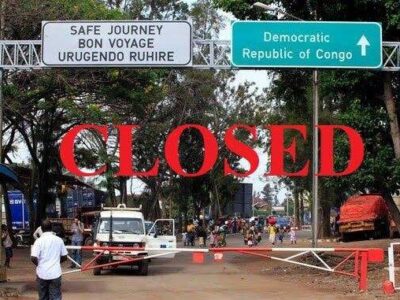The Minister of Finance had limited time to address all the critical areas during the 2025 National Budget speech. Below are the key areas where the minister should have said something but remained silent.
Major Macroeconomic Targets in the Budget:
1. Real GDP Growth Rate of 6.6%
2. Inflation Target of 6-8%
3. International Reserves of USD 3 billion
4. Domestic Revenue Increase to 21% of GDP
5. Fiscal Deficit Reduction to 3.1% of GDP
6. Limiting Net Borrowing to 1.9% of GDP
1. Real GDP Growth Target:
Real GDP growth reflects the overall health of an economy, and each government aims to improve this metric as it directly impacts citizens’ quality of life. However, Zambia has consistently failed to meet its GDP growth targets. In 2024, the target was 5.4%, but actual growth is expected to be only 2.3%, largely attributed to drought, which hampered food production and electricity supply, thus affecting industries.
While the drought has been blamed, even during years of favorable weather, Zambia has missed its GDP targets. Other factors like inflation, currency depreciation, and low copper production have also contributed to underperformance. In 2025, drought may not be a major factor, but inflation and currency devaluation will persist. However, copper production is expected to improve. If drought contributed significantly to low GDP in 2024, the absence of it may improve growth in 2025. Still, the target of 6.6% is overly optimistic given the ongoing challenges with power supply, unfavorable exchange rates, and high borrowing costs.
2. Inflation Target:
Despite setting an inflation target of 6-8%, Zambia is expected to end 2024 with inflation above 16%. The main drivers of high inflation are the devaluation of the kwacha, high fuel costs, and poor agricultural production. While agricultural production is expected to improve in 2025, the kwacha is unlikely to strengthen significantly, even with increased copper production. High fuel prices will continue to drive up transportation and production costs, making the inflation target unrealistic without a clear strategy to address these challenges.
3. International Reserves Target:
Maintaining international reserves at USD 3bn is a commendable target, but it should have been set higher, especially considering expected growth in mining production and taxes. While expenditures are also growing, the government should prepare for unforeseen needs, such as increased import requirements, and adjust reserves accordingly.
4. Domestic Revenue Target:
Increasing domestic revenue to 21% of GDP may be achievable but is overly ambitious given that Zambia’s tax-to-GDP ratio has historically hovered around 16%. While the Zambia Revenue Authority (ZRA) has introduced new measures like smart invoicing, these may not be sufficient to raise domestic revenue to the desired level quickly. Additionally, there is a strong correlation between tax revenue and GDP growth. Given the ambitious GDP growth target, the corresponding increase in revenue may not materialize as expected.
5. Agriculture:
While there has been an increase in budgetary allocation for agriculture, the percentage allocation in the overall budget has declined. Agriculture should be treated as an alternative to mining, but the larger share of the allocation is going to the Farmer Input Support Programme (FISP) and strategic food reserves, with little attention to areas like recruitment of extension officers who can support farmers benefiting from FISP.
The budget mentions infrastructure developments in farming blocks but provides no details on whether the allocated funds from 2024 were fully utilized and how they impacted agricultural production. Strategic food reserves, a critical area for food security, also received no clear explanation on how the 2024 funds were spent and what impact the 2025 allocation will have on mealie meal prices for urban consumers. Dams and boreholes have been constructed, but the government failed to explain how these investments align with the overall food security target.
6. Health:
While the health sector received an increase in absolute terms, the key allocation for medicines remains unchanged. The minister claimed that the supply of medicines in public hospitals had improved without increasing spending, implying that previous shortages were due to logistical issues, not budget constraints. However, it remains unclear how much was spent to resolve these logistical challenges and why such an issue should recur.
Additionally, the budget does not account for inflation on medical supplies, which are USD-dominated, meaning the same allocation may procure fewer medicines in 2025 due to currency depreciation. While there is increased funding for medical equipment, the budget overlooks critical areas such as liver and kidney treatments, despite acknowledging the high cost of sending patients abroad for such care. The minister also failed to mention plans to recruit specialist doctors or invest in the necessary equipment for these procedures in Zambia.
7. Tourism:
The visa waiver has contributed to increased tourist arrivals in the past, yet no additional waivers were announced in the 2025 budget. However, it is commendable that the Victoria Falls border will now be open 24 hours. The budget allocation of K1.3bn for tourism infrastructure is a positive development.
8. Mining:
The stability in mining taxes is a positive step for investor confidence. The government’s plan to invest in aerial surveys to stimulate exploration could lead to new mining ventures. However, while copper production is expected to increase in 2025, there is no clear projection of how much will be produced. The increased mineral royalty revenue suggests higher production, likely driven by the resumption of operations at KCM and Mopani rather than new mines, which take longer to develop.
9. Debt Management:
Despite efforts to reduce borrowing, Zambia’s external debt grew in 2024. While government securities debt decreased, the intended borrowing levels were not achieved due to lenders’ inability to lend. The increase in lending rates also failed to deter borrowing, as the amount of credit extended actually increased. Local bills saw a positive reduction, but this was insufficient to stimulate significant economic activity.
Read More: Zambia aims for 21.4% domestic revenue of GDP in 2025 budget
10. Social Protection:
The Social Cash Transfer programme continues to grow, nearly matching the size of the FISP, contributing to the fiscal deficit and increasing Zambia’s debt burden. The budget retains the Food for Work programme, despite no drought being forecasted in 2025. Reducing the Social Cash Transfer could help ease the debt burden.
11. Energy:
The energy sector still relies heavily on subsidies, particularly for electricity and fuel. The budget failed to introduce fuel tax waivers that could lower transportation costs and benefit everyone, including recipients of the Social Cash Transfer, by reducing inflation. Investments in electricity are long-term, with little short-term relief expected. There is a discussion around raising electricity tariffs to attract investment, but unpredictable tariff increases could discourage potential investors. ZESCO could subsidize domestic power consumption using profits from power exports.
Conclusion:
The 2025 National Budget sets ambitious targets but falls short in key areas such as managing inflation, boosting GDP growth, and addressing inefficiencies in critical sectors like health and agriculture. Without clear strategies to meet these goals, Zambia may struggle to realize the envisioned improvements.
WARNING! All rights reserved. This material, and other digital content on this website, may not be reproduced, published, broadcast, rewritten or redistributed in whole or in part without prior express permission from ZAMBIA MONITOR.











Comments